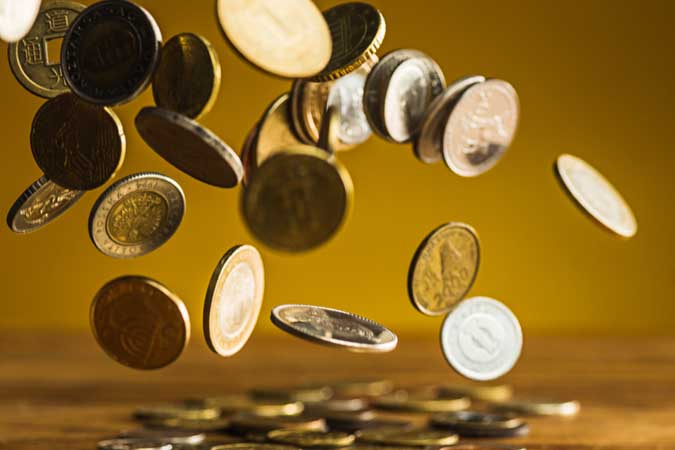Months into his presidency in 2016, President Rodrigo Duterte announced a foreign policy pivot to Beijing, as he shored up to $24 billion (P1.2 trillion) in funding pledges from China.
The initial list consisted of 26 big-ticket projects and was supposedly a display of greater confidence in the bilateral relations between Manila and Beijing.
This included: 1.) the Subic-Clark railway project by the Bases Conversion and Development Authority (BCDA) and China Harbour Engineering Co., 2.) the Bonifacio Global City-Ninoy Aquino International Airport Segment of the Metro Manila Bus Rapid Transit-EDSA project by the BCDA and China Road and Bridge Corp., 3.) Safe and smart city projects for the BCDA by the BCDA and Huawei Technologies, and, 4.) Transportation and logistics infrastructure at Sangley Point by Cavitex Holdings, International Container Terminal Services, Inc., and China Harbour Engineering, among others, most of which have never materialized into actual infrastructure in five years of Mr. Duterte’s term.
These projects were envisioned as part of China’s Belt and Road Initiative (BRI), which was built as a global investment and economic growth program. By early 2021, 140 countries worldwide had signed more than 200 BRI cooperation agreements — essentially frameworks for Chinese companies to build infrastructure projects such as ports, railways, power stations, and telecommunication networks using low-interest Chinese loans to host countries.
However, the pivot has not benefited the country as touted in 2016. Less than 5% of China’s promised $24 billion in loans and investments have come to fruition. Also, only a few China-funded projects have been completed or are set to be completed in 2021, such as the Binondo-Intramuros Bridge and the Estrella-Pantaleon Bridge, both of which had been hounded by controversies relating to the use of Chinese construction workers instead of Filipinos.
In fact, one major project funded through Official Development Assistance (ODA) — the P12.2-billion Kaliwa Dam project — remains in the early stages of implementation, with continuing objections from indigenous groups and local governments.
While there is a new China-financed bridge project connecting Samal Island and Davao City, it has been noted that other prospective China-financed projects were now going to be funded by other foreign sources, such as the Panay-Guimaras-Negros Bridge, which is aimed at improving the transport of agricultural goods in the region.
Aggravating the current situation has certainly been the coronavirus crisis, which has delayed many projects in the infrastructure sector. No less than the National Economic Development Authority (NEDA) said, “The unprecedented challenges brought by the COVID-19 pandemic, however, is expected to alter the overall infrastructure development agenda. The resource requirements of the response to the pandemic are expected to reduce the fiscal space initially allotted for the portfolio of investments and could slow down the movement and implementation of programs and projects.”
While the NEDA views using the Build, Build, Build (BBB) program as an instrument for socioeconomic recovery, the government should acknowledge that direct pandemic responses, such as vaccine procurement, massive testing, and social subsidies, should now take precedence in the national budget instead of expediting the implementation of still-indicative infrastructure projects.
The role of the BBB program in socioeconomic recovery should be confined mainly to projects already being implemented, or those with Notices-to-Proceed within the next six months, as still-indicative projects should not compete anymore with coronavirus response appropriations within our tightening fiscal space.
With this development, it is also time to rethink our pivot to China and assess whether it has been truly beneficial in resolving infrastructure underdevelopment in the last five years.
Despite the high-level projections of no less than the President on the impact of our bilateral relations, Japan remains the Philippines’ top provider of ODA, with the bulk of funding going into the BBB.
Japan has provided ODA amounting to $11.2 billion, while China only provided $600 million, a distant fifth from the list of other ODA funders such as the Asian Development Bank ($8.5 billion), World Bank ($5.3 billion), and South Korea $700 million).
Tokyo’s funding commitment is 18 times more than Beijing’s. This number should give the government pause on which bilateral partner truly cares for the nation’s development.
For all the President’s pro-China posturing, Beijing’s funding commitment just approximates the level of funding of local infrastructure projects proposed by legislators every year. In other words, the country is receiving pennies for all the chest-thumping that it has been doing in support of closer ties with Beijing.
And for what? The Palace continues to belabor the point on the current legal status of the waters, reefs, and islands within the West Philippine Sea.
It has employed doublespeak on the status of Julian Felipe reef, arguing that it was no less than the Hague ruling that invalidated the Philippine claim over the reef, only to capitulate over our legitimate claims over the area.
Despite Beijing’s failure to deliver on its development commitments, Malacañang continues to speciously tout China as the nation’s savior, showing no recalibration from the posture taken at the beginning of its term.
But it should be warned that we are now less than a year away from the elections, and most certainly, the skewed bilateral relations with Beijing will continue to hound this administration in the days leading to the elections.
It should remember that nothing lasts forever, even for those with the “mandates of heaven.”
Terry Ridon is a Non-Resident Fellow at the Stratbase ADR Institute, and a Convenor of InfraWatch PH.

